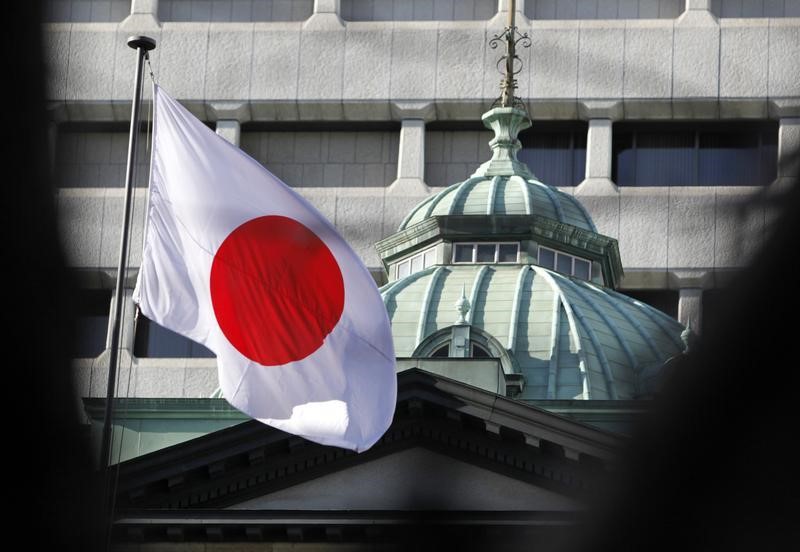Will the BOJ hike interest rates in March? Analysts weigh in

USD/JPY
+0.25%
Add to/Remove from Watchlist
Add to Watchlist
Add Position
Position added successfully to:
Please name your holdings portfolio
Type:
BUY
SELL
Date:
Amount:
Price
Point Value:
Leverage:
1:1
1:10
1:25
1:50
1:100
1:200
1:400
1:500
1:1000
Commission:
Create New Watchlist
Create
Create a new holdings portfolio
Add
Create
+ Add another position
Close
JP225
-0.33%
Add to/Remove from Watchlist
Add to Watchlist
Add Position
Position added successfully to:
Please name your holdings portfolio
Type:
BUY
SELL
Date:
Amount:
Price
Point Value:
Leverage:
1:1
1:10
1:25
1:50
1:100
1:200
1:400
1:500
1:1000
Commission:
Create New Watchlist
Create
Create a new holdings portfolio
Add
Create
+ Add another position
Close
Investing.com– The Bank of Japan is set to conclude a two-day meeting this coming Tuesday, with markets focused squarely on whether the central bank will mark an end to its ultra-dovish policies by raising interest rates.
Speculation over a pivot by the BOJ grew rapidly over the past two weeks, especially as the two main factors outlined by the central bank for it to consider tightening policy- chiefly strong wage growth and steady inflation- now appeared to be coming into play.
Negotiations between major Japanese employers and labor unions showed that Japanese workers won bumper wage hikes for 2024. This development came as the country saw signs of sticky inflation in February, which remained above the BOJ’s 2% annual target.
Higher wages are also expected to further underpin inflation, giving the BOJ more impetus to hike rates sooner. This notion was further reinforced by Finance Minister Shunichi Suzuki stating that Japan’s economy was no longer in deflation, and that a trend of higher wages was taking hold.
Any hikes by the BOJ will be the bank’s first such move since 2007.
Analysts more skewed to an April BOJ hike, but will be a close call
General consensus was that an April rate increase appeared more likely, but that it would be a close call, given that wage and inflation conditions gave the BOJ enough headroom to begin hiking rates this month.
“The BoJ may remove its (negative interest rate policy) and tweak some of its other unconventional monetary policy tools next week. If it doesn’t hike then it seems certain to do so in April. We are leaning to April as this is when it updates its economic outlook,” ANZ analysts wrote in a note, stating that the BOJ will have more information on wages and the Japanese economy in April.
ING analysts also leaned more towards an April move, but said that concerns over the Japanese economy, which narrowly avoided a recession in the fourth quarter, may keep the BOJ from acting hastily.
“We believe that an April hike is slightly more likely than a March hike. Next week, we expect the BoJ to change its forward guidance and scrap the yield curve control policy but keep its government bond purchase programme,” ING analysts said.
A Reuters poll also showed that analysts were more skewed towards an April hike, although by a slim margin.
Fragile Japanese economy likely to limit scope for tightening
But while the BOJ is set to end its negative interest rates, it is also widely expected to signal a staggered exit from other stimulative measures, amid persistent weakness in the Japanese economy, which narrowly avoided a technical recession in the fourth quarter.
Governor Kazuo Ueda flagged some concerns over slowing private consumption this week. While Ueda does expect consumption to recover on higher wages, his comments indicated that the central bank may wait for such signals before tightening policy.
Private consumption slowed sharply over the past year amid pressure from high inflation and stagnant wages. Strong capital spending was a key driver of the Japanese economy in recent months, and also helped it avoid a fourth-quarter recession.
Earlier comments from other BOJ officials also indicated that while the bank will raise rates in 2024, hikes will be minimal, while monetary policy is expected to remain largely accommodative.








